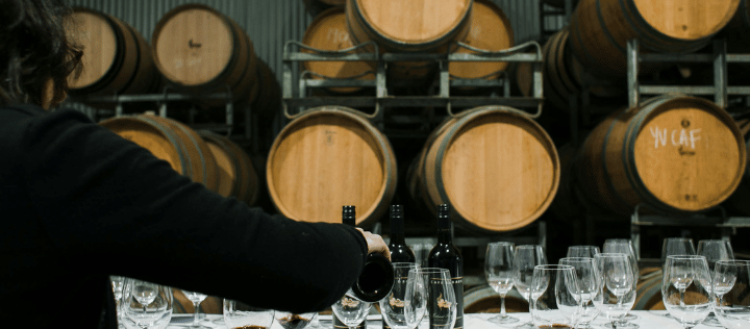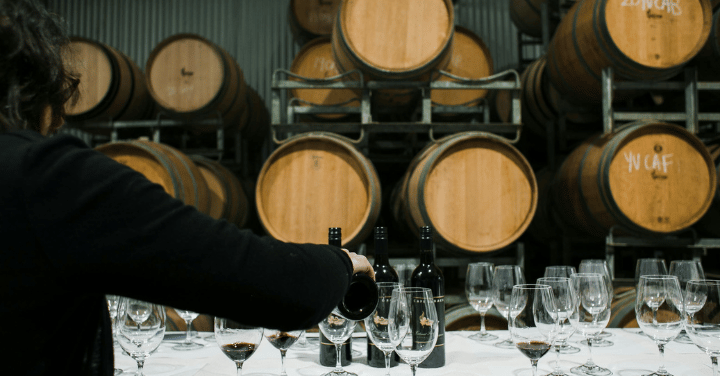Know The Difference: Wine Aroma VS Wine Bouquet
You must have noticed wine drinkers swirling the glass, sniffing, and then stopping to think and wonder what the smell reminds them of. You might have wondered why this is important or if it is just some fancy thing that wine connoisseurs recognize each other by.
While I must admit that the wine world can sometimes be too posh if you’ve just started learning about wine, or even discouraging, wine people are not diving their noses in their glasses for nothing.
You would be surprised to know that 75% to 95% of what we taste comes from the sense of smell, and that’s about how much you can say about wine just by sniffing it.
What is the Difference Between a Wine Bouquet and Wine Aroma?
When describing wine smell, some people use aroma, bouquet, or so-called “nose” interchangeably. In some publications, you might even find that the writers use bouquet to explain floral notes. However, in the traditional wine world, aromas and bouquet are two different things.
Aroma is often associated with young wine. It doesn’t necessarily mean that when you explain wine aromas, you refer to young wine but rather to aromas that are not associated with aging. Aroma is used to describe primary notes that come from the grape variety itself, so-called primary aromas.
Wine Bouquet, on the other hand, is used to explain notes that come from the wine-making process, so fermentation and aging and thus the smells have evolved and have given a young wine a new character. I’ve found that bouquet is more often described with adjectives and descriptive words, rather than calling out a particular smell, but in this article, we’ll try to help with that.

Wine Aromas
Talking about wine aromas can quickly become a very complex subject, and detecting them if you’re not used to it can make it even more complicated. What should you call out, what to look for, what if you sniff something that no one else does…Well, first, it’s good to know that our nose has a complex mechanism to detect aromas, and it doesn’t work on its own.
Genes that are in charge of our sense of smell are the largest group of genes in our body. Out of one million genes in our body, thirty thousand are in charge of the sense of smell, suggesting that smelling wine is essential to tasting it.
Detecting aromas happens in two parts of our body nose and the back of our mouth (fancy-named “retronasal olfaction”), so we’re well prepared for this experience.
Wine aromas that we’d detect by a quick smell after giving your wine glass a swirl are coming from the grape variety itself. That’s why they’re called primary aromas.
Usually, the aromas that come from grape varieties are:
- herbal
- floral or
- fruity
For example, one of my favorite varieties, Pinot Noir, is often noted for its aromas of raspberry jam, pomegranates, and spices, but also truffles and fungi when aged.
Interestingly, on a molecular level, these fruit aroma compounds look identical to the actual fruit aroma compounds. This means that the molecules that give away raspberry jam aromas in Clos de Tart pinot noir are the same as the molecules that are “in charge” of the taste of actual raspberries (ethyl butyrate).
Wine Bouquet
In addition to primary wine aromas, wine bouquet is often associated with secondary and tertiary.
Secondary aromas come from fermentation (mostly from the yeast used for fermentation). Some of the most common ones are:
- butter
- yogurt
- sourdough
- mushroom
- wild game
- bacon
- horse sweat.
Yeah, horse sweat can be a tough one to comprehend, and you might even think it’s on this list by mistake, but in the same way malic bacteria in yeast gives a buttery smell to certain chardonnays, Brettanomyces (Brett) gives that horse sweat, wild game, barn, bacon smell to certain wines.Brett is often associated with wine faults, but for some wines/wineries it’s even a trademark and a unique selling point.
When talking about wine bouquet, tertiary aromas refer to those that come from the aging process. You might encounter a yeasty, buttery bouquet in Champagnes due to their aging on dead yeast (sur lie) particles or caramel, coffee, and toast bouquet in wines aging in barriques.
Bouquet often associated with aging:
- toffee
- roasted marshmallow
- vanilla
- nuts
- cedar box
- cigar box
- tobacco…
Exercise Your Sense of Smell
Don’t despair if you can’t name any smell you’re catching in your wine glass. It can often happen that your nose and brain are not trained enough to detect delicate aromas, but that’s not the end of the world.
As a young sommelier, I was often told to go to the grocery store and farmers market and smell everything, all the fruits, vegetables, and spices, and try to memorize the smell.
That probably works for most people, but I’m one of those who still learn the best through play, and I found one of those aroma boxes on Amazon and started training my nose while also playing and competing with literally everyone.
It turns out that not only wine people were competitive. If it’s any condolences for those of you who have nose just to fill the spot on their face like me, many were convinced that they can guess many more scents than they actually could. But once you memorize that smell and finally find it in the wine, that memory never goes away!
I remember my first “Aha!” moment when I dove my nose in the glass of Tasmanian Reisling and that petrol aroma, which I was sure was in the kit by mistake, hit me right away.
So, like always, the tip will be never to stop tasting and exploring, but don’t forget your notes when you do! I used to carry simple wine-tasting notes everywhere with me and write down my notes about every wine I tasted, and that was one of the best things I could do for my wine education.





